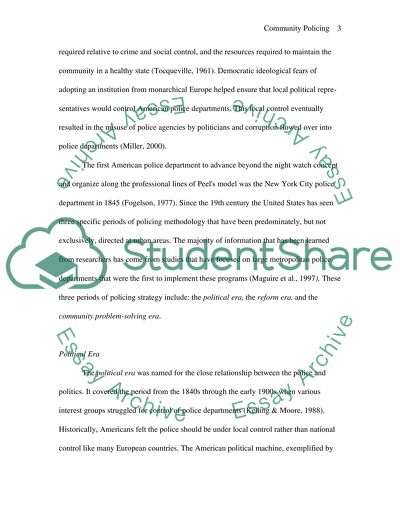Cite this document
(“The History of Community Policing Research Paper - 1”, n.d.)
Retrieved from https://studentshare.org/history/1417558-the-history-of-community-policing
Retrieved from https://studentshare.org/history/1417558-the-history-of-community-policing
(The History of Community Policing Research Paper - 1)
https://studentshare.org/history/1417558-the-history-of-community-policing.
https://studentshare.org/history/1417558-the-history-of-community-policing.
“The History of Community Policing Research Paper - 1”, n.d. https://studentshare.org/history/1417558-the-history-of-community-policing.


